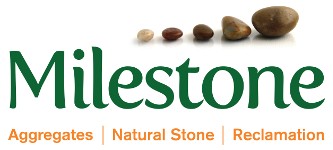Last blog articles
Blog archives
Search on blog
How to measure up for your landscaping supplies
If you’re thinking about landscaping your garden, you may be unsure as to how much supply you’ll need to order.
This can be even more of a challenge if this is your first DIY garden project and you have no prior experience in buying landscaping materials.
You’ll need to accurately calculate material volumes to make sure you have enough – and indeed, not too much!
In this blog, we’re going to look at some of the key steps you need to take to measure your landscaping supplies.
Things you will need:
• Measuring tape
• Calculator
Measuring the area
The very first step is to size up the area with measuring tape to get an idea of your patio or garden size. Measure the length of the area first, and then the width. Next, multiply the length by the width to give you the square footage of the area and an idea of your material volume requirements.
You’ll also need a clear understanding of the unit of measurement for each of your materials. For example, bagged material is typically measured in cubic feet, while bulk is typically measured in cubic yards. You'll find more info here.
A cubic foot is the quantity of material that fits into an area of one foot high, by one foot wide, by one foot deep. A cubic yard, on the other hand, is the equivalent of three feet for each measurement – so you’ll need to follow the same process, then multiply each measurement by three.
Determine how thick you want your landscaping materials to be
Having the measurements for the square footage of the area is a great start, but you also need to calculate the depth. For rectangular or square-shaped areas, you can calculate the area by measuring the length and width and multiplying them together. Next, you’ll need to multiply the total area calculation by the depth measurement. The depth likely to be measured in inches – however, this will need to be converted to feet to match the total area calculation measurement, before dividing by 12.
To purchase the right volume of materials to cover the depth of the space, it will depend on the type of material used. Rocks and shells, for example, are much larger pieces, so will typically only need a couple of inches of material to provide enough coverage. Mulch is far more lightweight and smaller in size, and may require 5 inches in comparison.
The more mulch you lay down, the less it will transfer; thicker coverage means less gaps for weeds to grow through!
It would be wise to install a wooden or concrete barrier around the edge of the landscaped area to prevent your materials from being thrown onto grassy sections. Unexpected stones and other aggregates on the lawn could cause damage to your lawnmower.
Should you buy bags or in bulk?
From your calculations, you should be able to take an educated guess on the amount of material that is required. If you’re still in need of assistance with this, get in touch with a member of the Milestone team, who will be happy to help.
And remember, we offer poly bags, bulk bags and loose load options, depending on how much is needed for the space. Buying in bulk is certainly a much more affordable option if you have a larger area to cover.

 How to measure up for your landscaping supplies
How to measure up for your landscaping supplies
 Things to do in your garden before the spring kicks in
Things to do in your garden before the spring kicks in
 5 lesser-known facts about rock salt
5 lesser-known facts about rock salt
 How snow and ice can damage your property
How snow and ice can damage your property
 Flat pebbles for a heart-warming lockdown keyworkers initiative
Flat pebbles for a heart-warming lockdown keyworkers initiative